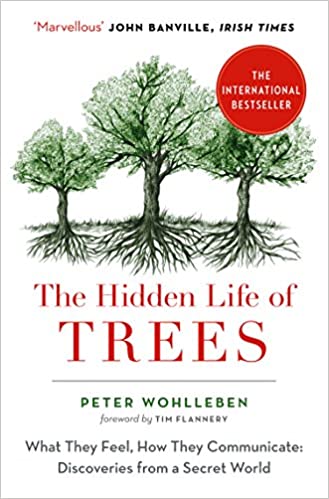
Peter Wohlleben
The Hidden Life of Trees
What They Feel, How They Communicate: Discoveries from a Secret World
Get it on AmazonAre trees social beings? How do trees live? Do they feel pain or have awareness of their surroundings?
In The Hidden Life of Trees, Peter Wohlleben makes the case that the forest is a social network. He draws on groundbreaking scientific discoveries to describe how trees are like human families: tree parents live together with their children, communicate with them, support them as they grow, share nutrients with those who are sick or struggling, and even warn each other of impending dangers.
Wohlleben also shares his deep love of woods and forests, explaining the amazing processes of life, death and regeneration he has observed in his woodland. A walk in the woods will never be the same again.
Peter Wohlleben | The Agenda with Steve Paikin on YouTube.
The Hidden Life of Trees Quotes
“But the most astonishing thing about trees is how social they are. The trees in a forest care for each other, sometimes even going so far as to nourish the stump of a felled tree for centuries after it was cut down by feeding it sugars and other nutrients, and so keeping it alive. Only some stumps are thus nourished. Perhaps they are the parents of the trees that make up the forest of today. A tree’s most important means of staying connected to other trees is a “wood wide web” of soil fungi that connects vegetation in an intimate network that allows the sharing of an enormous amount of information and goods. Scientific research aimed at understanding the astonishing abilities of this partnership between fungi and plant has only just begun.”
“But why don’t we see leaves as black? Why don’t they absorb all the light? Chlorophyll helps leaves process light. If trees processed light super-efficiently, there would be hardly any left over – and the forest would then look as dark during the day as it does at night. Chlorophyll, however, has one disadvantage. It has a so-called green gap, and because it cannot use this part of the color spectrum, it has to reflect it back unused. This weak spot means that we can see this photosynthetic leftover, and that’s why almost all plants look deep green to us. What we are really seeing is waste light, the rejected part that trees cannot use. Beautiful for us; useless for the trees.”
“But we shouldn’t be concerned about trees purely for material reasons, we should also care about them because of the little puzzles and wonders they present us with. Under the canopy of the trees, daily dramas and moving love stories are played out. Here is the last remaining piece of Nature, right on our doorstep, where adventures are to be experienced and secrets discovered. And who knows, perhaps one day the language of trees will eventually be deciphered, giving us the raw material for further amazing stories. Until then, when you take your next walk in the forest, give free rein to your imagination – in many cases, what you imagine is not so far removed from reality, after all!”